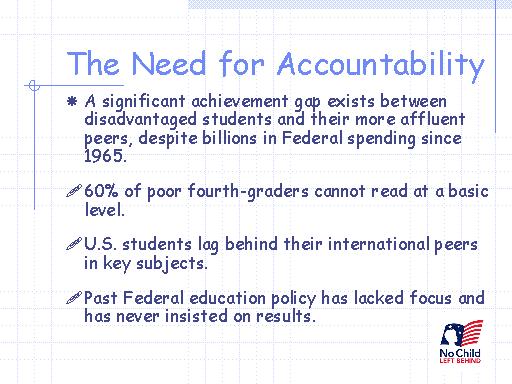
|
 |
Closing the Achievement Gap in America's Public Schools |
 |
| |

 | |
 | | 
Text (slide 7):
The Need for Accountability
- A significant achievement gap exists between disadvantaged students and their
more affluent peers, despite billions in Federal spending since 1965.
- 60% of poor fourth-graders cannot read at a basic level.
- U.S. students lag behind their international peers in key subjects.
- Past Federal education policy has lacked focus and has never insisted on results.
|
|



